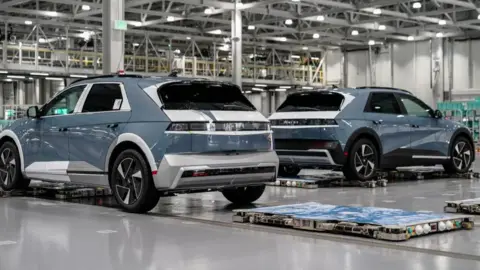KENT, Conn. (AP) — For most Americans, there’s less reason than ever to worry about finding chargers to fuel up an electric vehicle. But charging worries remain a top hesitation for potential buyers, second only to sticker shock.
Those concerns linger even as fast chargers multiply. More than 12,000 have been added within a mile of U.S. highways and interstates just this year, an Associated Press analysis of data from the National Renewable Energy Laboratory shows. That’s about a fifth of quick-charging ports now in operation.
Yet a new poll from The Associated Press-NORC Center for Public Affairs Research and the Energy Policy Institute at the University of Chicago finds about 4 in 10 of U.S. adults still point to range and charging time as “major” reasons they wouldn’t buy an EV. That’s significant considering only about 2 in 10 Americans say they would be “extremely” or “very” likely to make a new or used electric vehicle their next car purchase.
Daphne Dixon, leader of a nonprofit that advocates for clean transportation, is actively working to dispel range anxiety. She has taken a coast-to-coast road trip in an EV each year since 2022, posting snapshots of the charging experience along her 3,000-mile (4,828-kilometer) route, hoping to “bust” Americans’ anxiety about range and charging.
Traveling on Interstate 80, drivers can encounter few stretches more than 10 miles away from a fast charger, illustrating that infrastructure improvements are ongoing. The miles on I-80 covered by fast chargers has increased by 44% since 2021.
While many are concerned about charging, cost remains the most commonly stated reason for avoiding EVs, with the AP-NORC/EPIC poll indicating that more than 80% of adults noted high prices as a barrier.
In Connecticut, for example, government plans to install more charging stations are underway, with a recent plan to use $1.3 million in federal funds to increase fast-charging availability to help ease these concerns about charging accessibility.
Despite a growing commitment to EV infrastructure, the path forward involves tackling both the perception of charging availability and the pressing concerns over vehicle costs.























